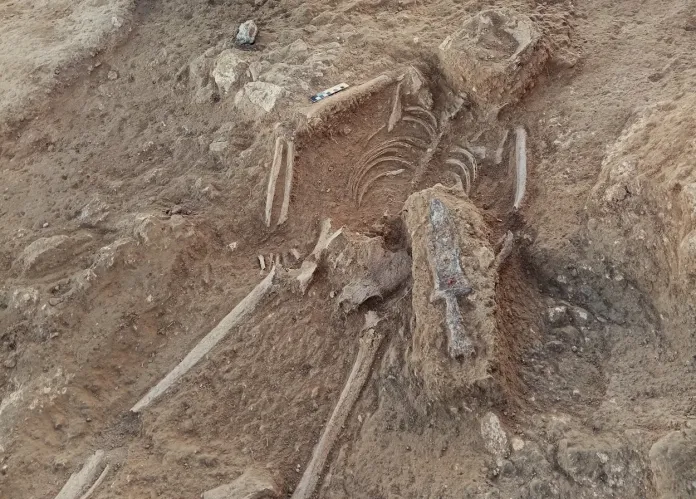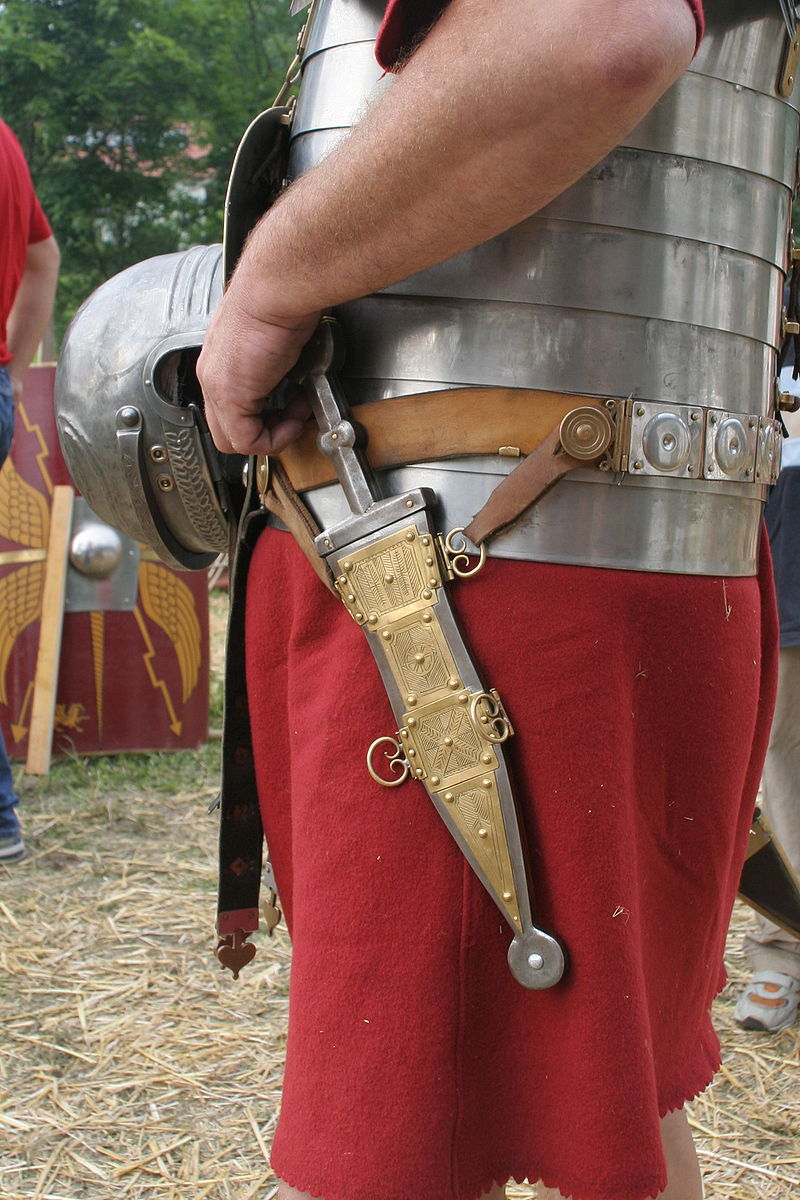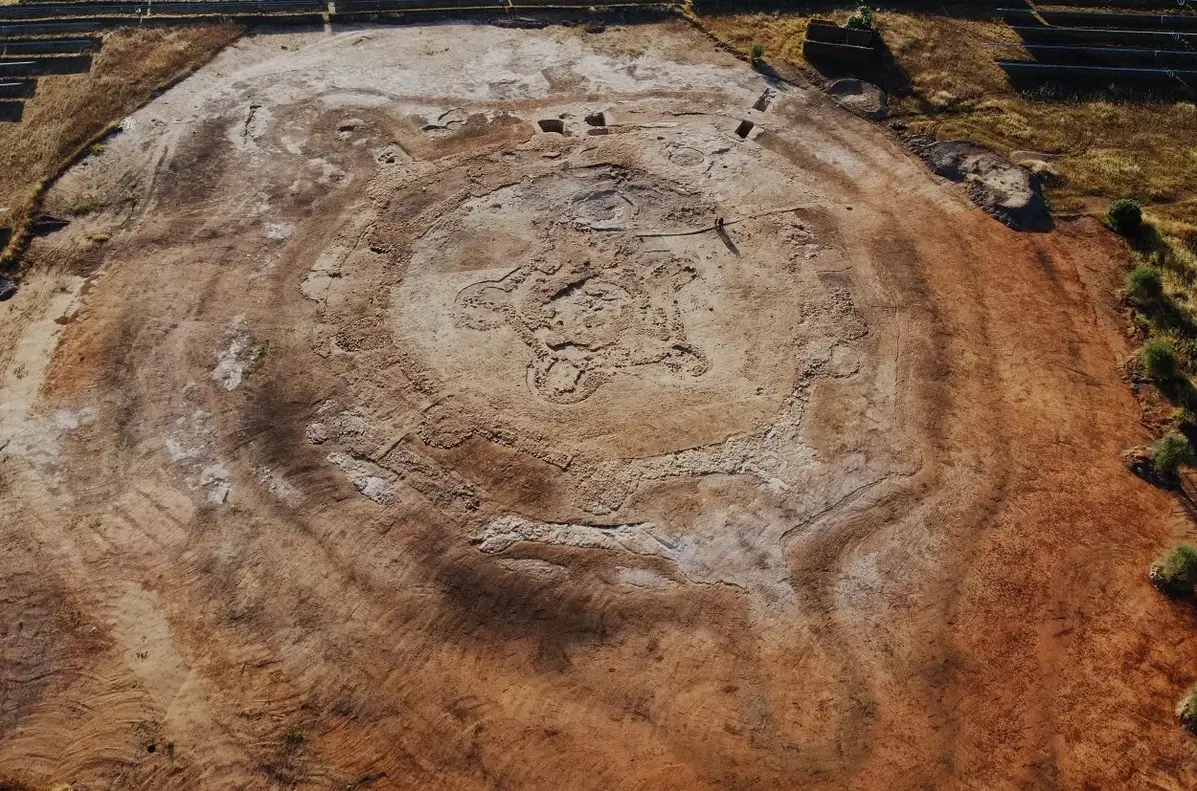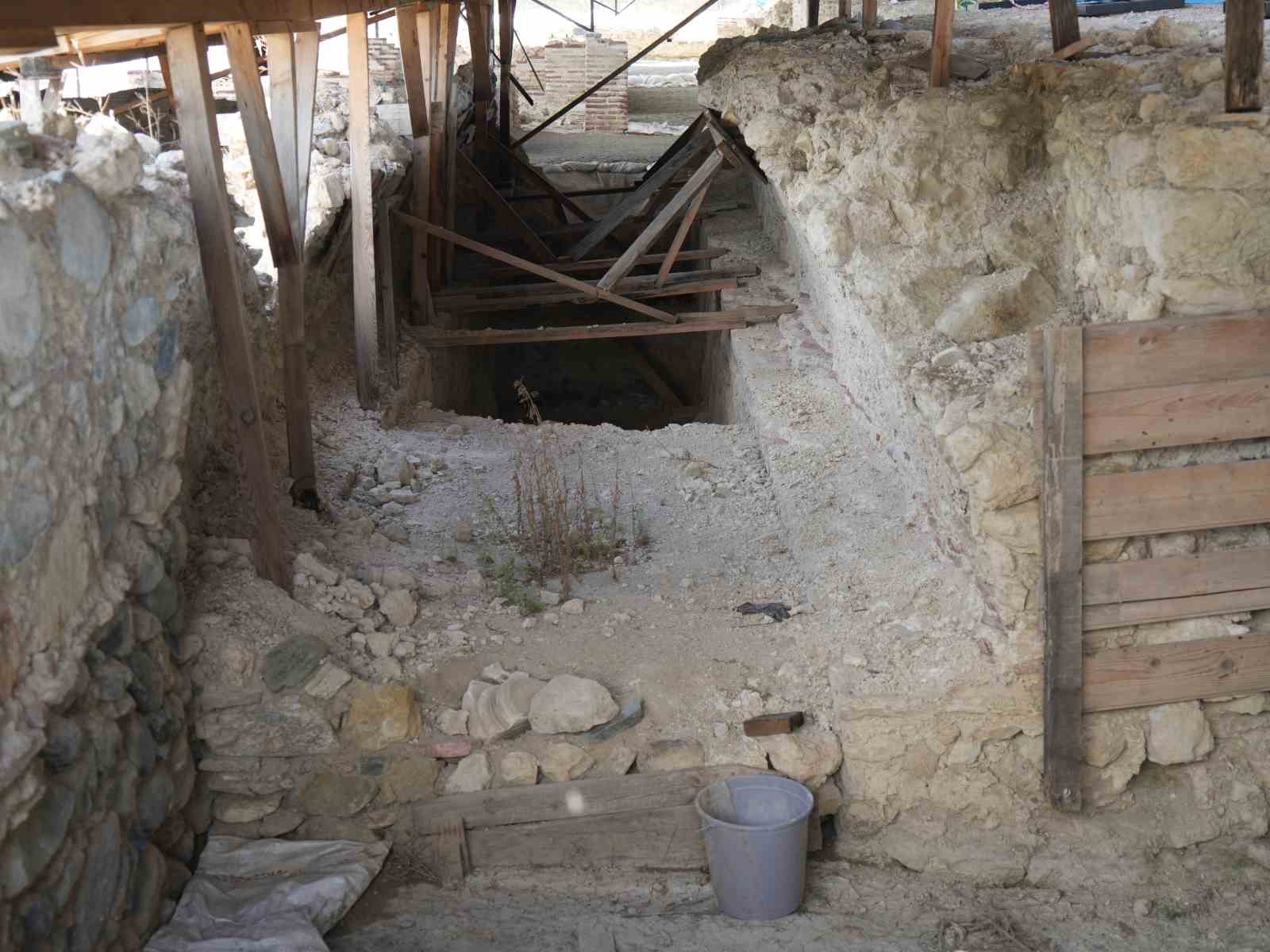During the construction of a new photovoltaic park at Cortijo Lobato, near Almendralejo in Spain’s Extremadura region, archaeologists made a remarkable discovery: the skeletal remains of a man buried with a Roman pugio, a type of dagger. This site, with a history dating back to the 3rd millennium BC, shows evidence of human activity extending to the 5th century AD.
The area was first identified during preliminary investigations in 2021. Archaeologists from TERA SL were commissioned to conduct further research, uncovering a fortified settlement characterized by three concentric walls, four rock ditches, and 25 defensive towers, stretching 550 meters in length.
According to ACCIONA, the company responsible for the park’s construction, the castle was likely built to protect crops during a severe drought that significantly limited agricultural production. The site is believed to have been abandoned around 2450 BC and remained largely uninhabited until the Roman Empire period.
In addition to the skeleton, archaeologists discovered various Copper Age artifacts, including arrowheads, axes, plates, bowls, and loom weights. However, the most intriguing find was the skeleton of a man buried face down in a shallow grave, with his feet appearing to be severed. This positioning may indicate a sign of dishonor. The presence of the pugio suggests that he could have been a legionary subjected to fustuarium, a harsh military discipline imposed on deserters and soldiers who committed offenses.

Pugio: Melee weapon of the Roman soldier
The pugio is a type of short dagger that was commonly used during the Roman Empire. Favored by Roman soldiers for close combat and special missions, the pugio stands out for its practicality and lethality.
Features of the Pugio
Typically measuring between 20-30 cm in length, the pugio features a single sharp, pointed blade, making it highly effective in close-quarters battles.
While primarily crafted from steel, some pugiones were made from bronze or iron, showcasing a variety of materials that enhanced their durability. Pugiones often came with sheaths made of bone or wood, designed for easy attachment to soldiers’ belts for quick access.

Uses of the Pugio
Close Combat: The pugio was frequently employed in gladiatorial contests and on the battlefield. Soldiers relied on the pugio to engage effectively with enemies at close range.
Assassination: The pugio played a significant role in historical events, particularly in the assassination of Julius Caesar. This highlights its use as a weapon for covert operations and targeted strikes.
Everyday Life: Some Roman citizens carried pugiones for self-defense in their daily lives. This illustrates that the pugio was not only a military weapon but also a personal protection tool.
Cover Image: ACCIONA





